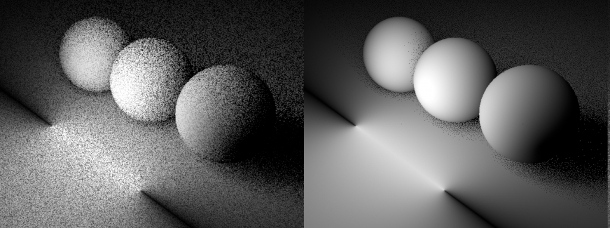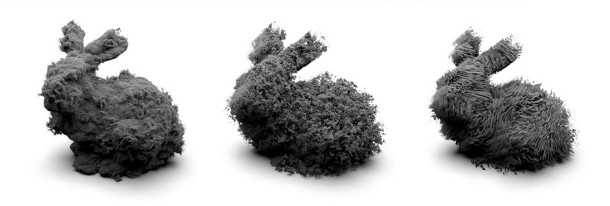Solid Angle ships Arnold 5
Originally posted on 13 April. Scroll down for news of updates to the integration plugins.
Solid Angle has released Arnold 5, the latest update to its production renderer, updating the API and sampling algorithms, and adding new physically based Standard Surface, hair and volume shaders.
The release also introduces support for Light Path Expressions and a number of workflow and performance improvements – but not for GPU rendering: a feature that many users had hoped to see.
The new version is shipping with 3ds Max 2018, also released yesterday.
Key changes beneath the hood
Most of the key changes in Arnold 5 are beneath the hood, notably to the C++ API, which Solid Angle describes as having been “cleaned of legacy features, refactored, extended and simplified”.
The new architecture will result in all existing custom tools created for Arnold needing to be recompiled, although the developer is pitching the process as “for the most part … easy changes”.
The release also introduces a new decoupled shading API and an associated BSDF API, which you can read about in more detail via the link at the foot of this story.

New sampling algorithms reduce render noise
Arnold’s sampling algorithms have also been updated in version 5. Solid Angle claims that the changes should result in reduced render noise for both direct and indirect ilumination.
The image above compares the old and new samplers with a quad light, at one sample/pixel.
As we reported in our round-up of Solid Angle’s sneak peeks at Arnold 5, the update also introduces two-dimensional dithered sampling.
The technique does not reduce noise, but redistributes it in a more visually pleasing way, resulting in “[improved] results with soft shadows, indirect illumination and DoF” at low sample rates.
Speed boosts to both pre-processing and rendering
Solid Angle claims that architectural changes lead to “significant speedups during both render start-up and ray-trace time”.
The highest figure quoted by the company is a 10x speed boost when pre-processing textures in Arnold’s .tx format, although the other performance improvements quantified in the firm’s press release are much lower.
The firm quotes a 2x speed boost when loading “large” OpenVDB volume caches, and a speed boost of up to 2x when rendering “indoor scenes with multiple GI bounces [and] objects with high transmission depth”.
New layered Standard Surface ubershader
The update also introduces a new set of physically accurate shaders, including a new Standard Surface ubershader that replaces the existing Arnold Standard shader.
A layered shader compatible with the Disney principled material, Standard Surface includes layers focused on replicating specific real-world materials, including metal, glass, water and ice, and skin.
It is energy-conserving by default, and supports per-light AOVs.

New physically based hair shader with biologically plausible controls
There is also a Standard Hair shader, which again, is physically based and replaces the old hair shader.
It comes with a wide range of parameters, including two representing melanin, the pigment in human hair and skin, making it the only hair shader we’re aware of with biologically plausible controls.
The shader supports unbiased hair-to-hair scattering and “can be used in production without resorting to dual scattering or other tricks”.

Other changes to shading and shader authoring
Other new shaders include Standard Volume, a new physically based volumetric shader.
Notable features include the option to use blackbody emission to control the colour and intensity of lighting, meaning that renders can be driven directly by data generated in physics simulations.
The shader also includes a displacement channel, making it possible to use noise textures or other shaders to add more detail to volumetric effects, as shown in the image above.
The core renderer now ships with over 80 built-in utility shaders, some previously only included with the Maya, Houdini and Cinema 4D integration plugins, helping to minimise issues in multi-software pipelines.
Shaders can also now be written in Open Shading Language as well as C++, bringing Arnold into line with renderers like RenderMan, V-Ray and OctaneRender.
Support for Light Path Expressions and smaller new features
Arnold 5 also introduces the option to use Light Path Expressions (LPEs) to extract individual lighting components into separate AOVs, increasing flexibility during compositing.
You can see a list of the 26 built-in LPEs and the effects they can create in the online documentation.
Arnold 5 also introduces support for the OpenColorIO and synColor colour-management standards
Other changes include a new VR camera node, and workflow improvements when using procedural geometry and image-based lighting, discussed in more detail in the page linked at the foot of the story.
No GPU rendering in this release
However, one feature that hasn’t made it into the release is the one that many users were most hoping for: GPU rendering.
Although Solid Angle has confirmed that it is working on GPU support – in his talk at Siggraph 2016, company founder Marcos Fajardo said that development had been in progress for at least a year – Arnold 5 remains CPU-based. You can find more details in our original story.
Pricing and availability
Arnold 5 is available for Windows 7+, Linux and Mac OS X 10.8+. Integration plugins are available for Maya 2015+, 3ds Max 2017+, Cinema 4D R16+, Houdini 13+, Katana 2.5 and Softimage 2013+.
Updated 21 April: Solid Angle has just released HtoA 2.0, making the Houdini integration plugin compatible with Arnold 5. New versions of the 3ds Max, Cinema 4D and Maya plugins are also available.
New permanent floating licences cost $1,220 each, including one year’s maintenance, and rental options are available. The integration plugins are free.
Read an overview of the key features in Arnold 5 in Solid Angle’s press release
Read a full list of new features in Arnold 5 in the online documentation
